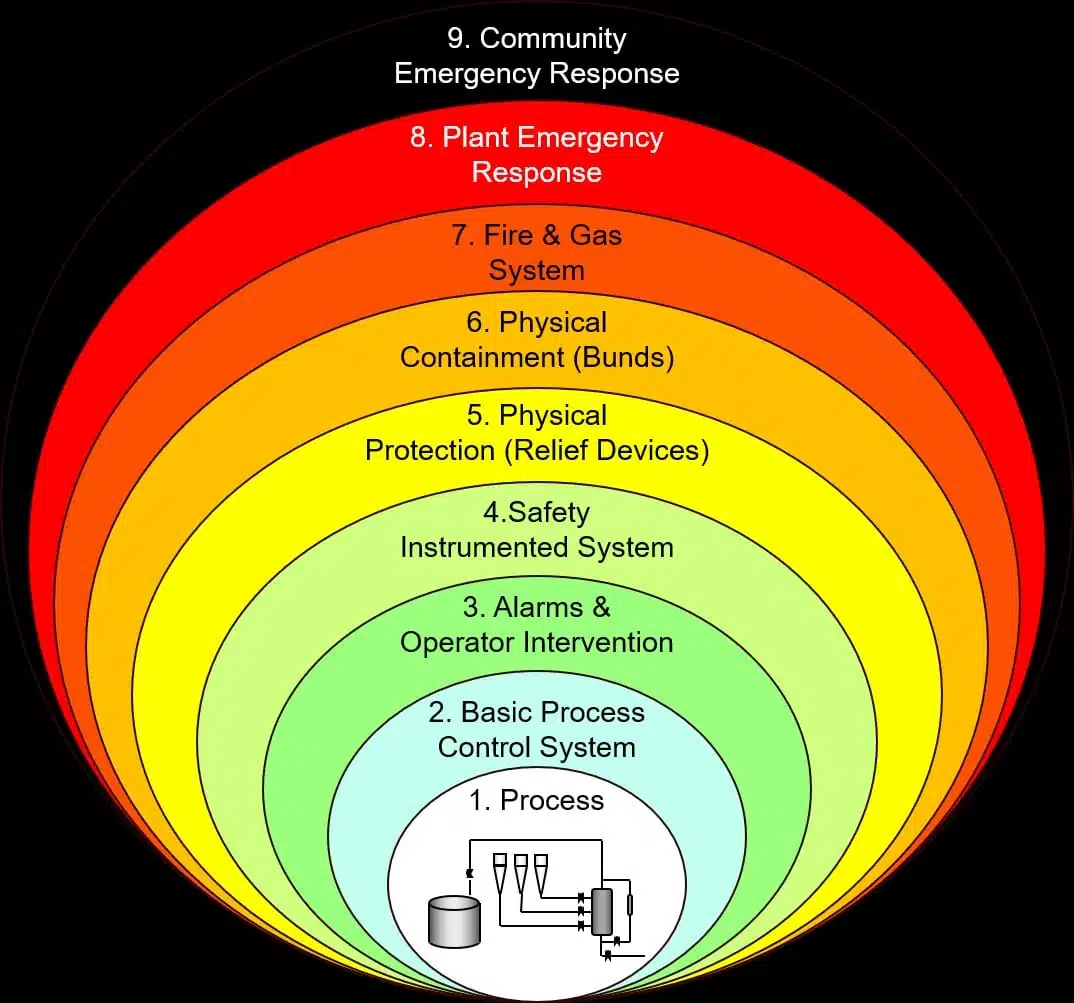Last edit: 26/06/2023

An intuitive way of representing the risk reduction capability of a Safety Instrumented System is to use the concept of Protection layer as described in IEC 61511-1.
[IEC 61511-1] 3.2 Terms and definitions – 3.2.57 Protection Layer: any independent mechanism that reduces risk by control, prevention or mitigation.
Note 1 to entry: It can be a process engineering mechanism such as the size of vessels containing hazardous chemicals, a mechanical mechanism such as a relief valve, a SIS or an administrative procedure such as an emergency plan against an imminent hazard. These responses may be automated or initiated by human actions (see Figure).
In a typical chemical process, various protection layers, like shown in the drawing at the side, are in place to lower the frequency of undesired consequences: the process design (including inherently safer concepts); the basic process control system (BPCS); safety instrumented systems (SIS); active devices (such as relief valves); passive devices (such as dikes and blast walls); human intervention; etc.
Protection layers that perform their function with a high degree of reliability may qualify as independent protection layers (IPL).